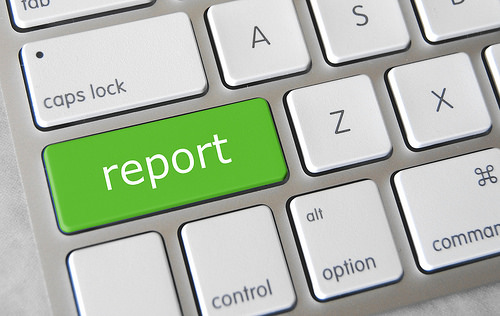A realization about reporting
The other day for what seems to me like the umpteenth time I read a line like the following in the monthly reporting: “The software module is still much too slow.”
I was already getting up to have a chat with the author when a realization hit me. Before that moment I could not have put it into words, but then I knew: To me it is the essence of good reporting, that it does not make me want to get up from my chair. Instead a good reporting reassures about my trust in the reporter.
I simply cannot imagine that colleagues actually enjoy me barging into their offices and firing probing questions at them. So I wonder: why do they write reports that make me do it? Maybe, I am thinking, it is because they haven’t realized yet: It is all about your manager not dropping in afterwards to discuss your report.


What reporting is often lacking
Want me to be more specific? Take the line I cited earlier. What’s wrong with it? Nothing really! Except that it was the only sentence on that matter in the entire report. When reading such an isolated sentence a couple of questions come to my managerial mind immediately: What does “much” mean? What is the consequence of this poor performance? How long has this been going on? What attempts have been made to remedy the problem? When will it be fixed? With what certainty? What will this cost us?
Of course there is loads of advice on the topic of reporting (such as this). To be honest I find most of it rather general. So let me give you my personal perspective. As a line manager here is the impression I would like to get from a good report:
- The reporter has good and unbiased understanding of the situation.
- He is giving the information to me straight with a proper degree of self-criticism.
- He has worked out options to deal with the situation.
- He has an understanding of the consequences of these options.
- He is in charge of the situation and willing and able to do what it takes to get a solution.
These things will build my trust and my confidence that my intervention is not needed. It is probably obvious that my example line above did nothing to build this trust.
Reporting clinic
Here is what I try to keep in mind when writing a report myself:
- Give the most relevant factual information in a sober and unbiased way.
- Add my assessment of the situation. Keep that strictly separated from the facts.
- Don’t downplay issues. But don’t exaggerate either. Mention issues early when they surface. Add enough self-criticism.
- When it is relevant for how or when a problem can be solved (and only then) mention what led to the issue. When doing this make sure not to make it sound like a justification.
- Make clear that I developed a plan to solve the issue. Explain its most important properties.
- Be clear and specific while at the same time avoiding emotional wording.
All these points basically aim at one goal: building trust with the recipient that I have the situation under control (if I don’t I need to escalate the issue. But that’s an entirely different matter and should never be confused with reporting): By including the relevant facts I prove that I have sufficient and unbiased knowledge of the situation to make competent decisions. The reader can then match my assessment of the situation with these facts and see if it is plausible from his perspective.
Of course the motives for writing things in a certain way are always under scrutiny. That’s why biased assessments are so corrosive: they make the entire report questionable. Hence I strive for minimizing the suspicion to be biased. Mentioning issues early, being reasonably self-critical and not downplaying problems are important means to meet this goal. The history of problems, however, I only mention if is necessary for understanding the report. Two reasons: it focusses the reader in past instead of the future and it has a tendency to end in blame-storming.
Last but not least I give a forecast of the solution I am driving for: when will the issue be solved? What consequences and costs will that have? And what is the confidence level for this approach? Again credibility is important. Hence the solution should not be oversold. It may even be acceptable to mention a plan does not exist yet.
Nebulous phrases give the impression that the author is trying to cloak the truth. They immediately raise the suspicion of critical readers. Emotional wording can seem like an attempt of manipulation. That is why I try to keep my words as clear, specific and unemotional as possible.
Conclusion
So much on reporting. Of course this is just my two cents. The only thing I can say is: I did not have too many probing interviews by my bosses after sending in my reports. What do you do to foster the trust of your boss in your reporting?

Leave a Reply